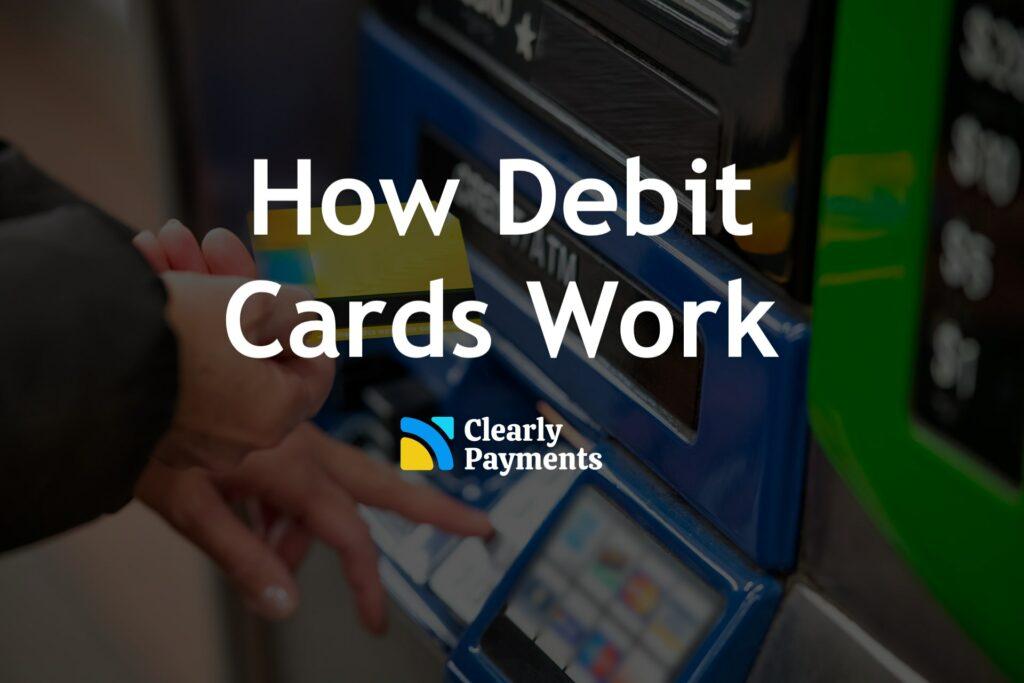Debit cards have had a steady evolution from the early days of electronic funds transfer to the widely accepted payment method we know today. Debit cards have become a popular choice for consumers looking for a convenient and secure way to make payments, without the potential for high-interest credit card debt.
Roughly 40% of transactions are debit cards, however this is decreasing quickly since more people are using credit cards for online purchases. It is still quite cumbersome to use a traditional credit card for eCommerce.
The history of debit cards
The history of debit cards dates back to the 1960s when the electronic funds transfer (EFT) was first introduced. The first EFT system was implemented by the Bank of America in 1966, which allowed customers to use a plastic card with a magnetic strip to withdraw cash from automated teller machines (ATMs) and to make point-of-sale (POS) transactions.
In the 1970s, other financial institutions began to introduce similar systems, and the use of debit cards for ATM withdrawals and POS transactions began to grow. In 1984, the Visa Electron card, which was the first true debit card, was introduced by Visa. The card was linked to the cardholder’s checking account, and transactions were processed in real-time, allowing funds to be immediately transferred from the cardholder’s account.
In the 1990s, debit card use continued to grow, as more and more financial institutions began to issue debit cards to their customers.
In the early 2000s, the use of debit cards was further popularized by the widespread use of the Interac network in Canada, as well as the introduction of the Maestro debit card by MasterCard.
Unlike credit cards, which allow cardholders to borrow money and pay it back later, debit cards are linked directly to the cardholder’s checking account and transactions are processed in real-time, allowing for immediate withdrawal of funds. This makes debit cards a popular choice for consumers who want to avoid the potential for high-interest credit card debt.
In recent years, debit cards have also become popular as an alternative to cash and check transactions, as they provide consumers with a convenient and secure way to make payments.
How do debit cards work
Debit cards work by allowing consumers to make purchases or withdraw cash directly from their checking or savings account. When a debit card is used to make a purchase, the funds are transferred from the cardholder’s account in real-time, effectively withdrawing the funds from the account to pay for the transaction. Withdrawals from an ATM using a debit card also deduct funds from the account immediately.
To use a debit card, the cardholder must first have a checking or savings account at a financial institution that issues debit cards. The cardholder will be given a plastic card with a magnetic strip or chip, and a personal identification number (PIN) to use when making transactions.
When making a purchase at a store or online, the cardholder will be prompted to swipe or insert the card, and may be required to enter the PIN or sign a receipt to complete the transaction.
When making a cash withdrawal at an ATM, the cardholder will be prompted to insert the card and enter the PIN. The ATM will then dispense the requested amount of cash, and the funds will be deducted from the cardholder’s account.
How to accept debit cards as a business
Debit cards have become one of the most popular payment methods for consumers. As a business owner, accepting debit cards can help you attract more customers and increase sales. Here are some steps to take if you want to start accepting debit cards as a payment method:
Open a Merchant Account: In order to accept debit card payments, you will need to open a merchant account with a payment processor, like TCM. This account will allow you to process payments from debit cards, credit cards, and other payment methods. Get started with a merchant account today.
Rent a Payment Terminal: A payment terminal is a device that allows merchants to process debit card payments. There are various types of payment terminals available, including traditional countertop terminals, mobile terminals, and virtual terminals. Read about the best credit card machines available.
Train Your Staff: It’s important to train your staff on how to use the payment terminal to process debit card payments. Make sure your staff is also trained on how to handle any errors or issues that may arise during the payment process.
Display Accepted Payment Methods: Make sure to display signs in your store or on your website indicating that you accept debit card payments. This will help customers feel more comfortable paying with their debit cards and can increase sales.
Ensure Compliance with Payment Card Industry Standards: Make sure you are following all the rules and regulations set forth by the Payment Card Industry (PCI) standards. This includes ensuring that your payment processing system is secure and that you are storing customer information safely.
By following these steps, you can start accepting debit card payments and offer your customers a convenient and secure payment option. Make sure to choose a reliable payment processor and payment terminal, train your staff, and display accepted payment methods to help customers feel comfortable paying with their debit cards.
Get the best debit card and credit card processing
- Lowest cost processing in the industry
- Fund transfers in less than one day
- World-class customer service




